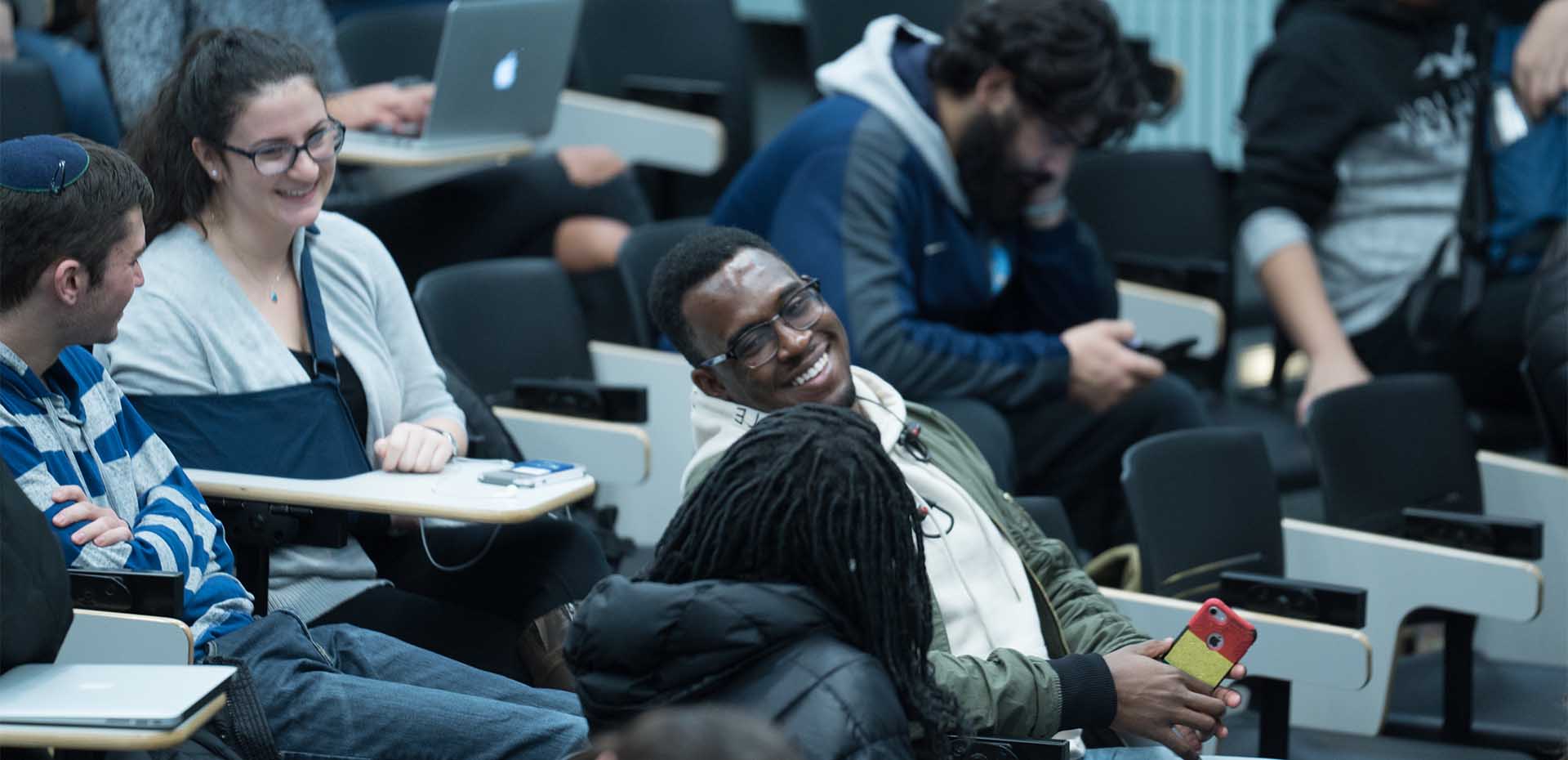We live in interesting times — information is now the most valuable asset. This means businesses must invest in communications to understand their market and provide value-added products. That’s why studying communications in today’s day and age is one of the best decisions you could ever make. As a student, you must research extensively in preparation for the real world. So, the question is, what’s the best way to do that? In this article, we will share valuable insights on how you can research and study effectively as a communications student. We will also share additional tips for success, so read till the end!
Research methods
As you advance from an undergraduate to a graduate program, such as the SBU Communications Masters online course at St. Bonaventure University, you will be expected to learn while also creating knowledge. You will generate this knowledge largely through developing and completing research in communication studies. During your research, you will need to ask questions about communication components and seek answers, as would a researcher in any other discipline. There are five steps in this process: conceptualize, plan and design, implement a methodology, analyze and interpret, and reconceptualize.
Notably, there are three major methods of research. Let’s take a look at each one of them below:
Quantitative research methods
This method entails collecting and analyzing numerical data. One might think that it only has a place in physical sciences but is also relevant in communications. If you wanted to see how print media represents diversity in the use of photographs and examples, you would have to count communicative acts. Another example of its use would be in reviewing feedback from political polls. While people have varied opinions, this type of research can help identify thought patterns which politicians and other policymakers can base their decisions on, which impact lives.
There are many ways to quantify human communication. One of them is through experimental research, which uses research principles in the physical sciences to explore human behavior. You can conduct experimental research in a lab setting or the real world. Either way, you will need a control group and an experimental group. Both groups are monitored to record their reactions to different variables.
Another way of conducting quantitative research as a communications student is through surveys. You can ask people questions and map the responses numerically in the form of tables, graphs, charts and percentages. You can send out the survey online or use physical handouts.
The third quantitative method is content analysis. Using this method, you count the number of occurrences of your focus of inquiry. For instance, you can count the number of occurrences of a particular phenomenon in a film, such as how many people in that film represent a particular race.
The last quantitative research method you can make use of as a communications student is meta-analysis. This is the analysis of existing statistics to reveal patterns in a particular line of research over time.
Qualitative research methods
Unlike quantitative research, which seeks to collect and analyze numerical data and causal relationships between variables, qualitative research focuses on processes and meanings that might be impossible to examine experimentally. Since it focuses on human communication in the real world, you must interact with the people and contexts you would like to study. Although it sounds straightforward, qualitative research has layers of complexity. For instance, you need to decide whether to reveal your identity to the people you are studying or not. There is also a likelihood of things not going as you expect; however, adhering to established qualitative research methods that are relevant to communications studies can make the process easier.
One of those methods is ethnography. This method puts you in the midst of what you are studying. It allows you to examine the communicative acts of people as they occur in their actual environments. For instance, if you would like to study a particular culture, you immerse yourself in it and examine it from the participant’s point of view.
Another qualitative method is focus group interviewing. This is a method where you create an environment for your participants to discuss topics of interest to you. That gives you the perfect opportunity to observe how people reconcile talking about their perceptions and opinions within a group of others doing the same thing. Focus group interviews can provide a lot of data for you to analyze beyond narrative data. For instance, you can study the use of language, who is shy to talk about certain topics, who becomes flustered, and who is attempting to impress those around them.
You can also choose to conduct action research. This is research with the intention of driving social change. Using this method, all participants are deliberate and contribute to the research process. For instance, communications professors can involve themselves in research to analyze their teaching methods and use the findings to improve their teaching strategies.
Another popular qualitative research method is unobtrusive research. This method aims to examine the traces humans leave behind without interrupting their lives. For instance, you can analyze people’s behavior on social media. What do they say? What time are they most active? Whom do they interact with? This is all done while maintaining a safe distance to avoid prompting a change in social behavior.
You can also perform a case study. This method uses various data collection methods but focuses on a particular case to gain an explanation. For instance, you can decide to examine a particular teaching method and how it influences graduation rates.
Rhetorical research
In rhetorical research, you analyze, interpret and critique the persuasive power of messages in a text. For instance, you could study how politicians use persuasion when delivering speeches to garner votes. In this case, you could write a rhetorical essay based on speeches made by various politicians in the recent past.
Mixed methodology
As the name suggests, mixed methodology is a research method that employs two or more of the techniques we have discussed above. For instance, you could use a qualitative method to develop quantitative research. This leads to a richer picture of the phenomenon under study.
Study methods for communication students
Your study habits play a major part in influencing your performance in class and on exams. You might realize that what used to work for you in the past, such as during high school, might no longer work in graduate school. Reading is more intense, and grad school classes are more rigorous, but that doesn’t mean you are doomed. All you need to do is find study methods that work for you. Below, we have shared a few methods you can use to get through your communications master’s online program. Experiment with them and see which ones work best for you.
Spaced repetition
Spaced repetition is a study method that divides your study sessions into spaced intervals. You review your lessons at increased intervals to ensure maximum retention. For instance, if you have an exam in a month, you might schedule your first study session today. Then you would schedule the next one in a week and another session a week after that. As you approach the exam, you would schedule study sessions every other day.
Active recall
Active recall is the process of repeatedly testing yourself to see how much information you have retained. You can use aids such as flashcards, practice tests and self-generated questions to test yourself. This helps you memorize, retain, and retrieve information more efficiently.
Microlearning
Microlearning is the approach of studying bite-sized pieces of information at regular intervals. You can pick the mode of learning that works for you. This could include short videos, audio, or infographics. Make sure that each session is only about 10-15 minutes long. This will help you reduce the effects of mental fatigue.
Pomodoro technique
The Pomodoro study technique is a time management method where you study for a stretch of 25 minutes, followed by a five-minute break. After four consecutive study intervals, you take a longer break, which is usually 15 to 30 minutes long.
Feynman technique
The Feynman Technique was developed by Nobel Prize-winning physicist Richard Feynman. This method requires you to step out of your comfort zone and break complex topics into chunks digestible enough for the average sixth-grade child. That means defining all unfamiliar terms, understanding connections between various topics and articulating ideas.
Tips to study smarter
Studying smarter means that you don’t have to slave over your schoolwork in order to excel. If you are juggling your master’s in communication, a job, and a family, then you need to find a system that works for you to ensure all those fronts are thriving. Below, we share a few tips to help you stay ahead of your studies while saving you time:
Know where you study best
Some people study best in a library in utmost silence. On the other hand, others concentrate better when music is playing in the background. So, the first step to becoming a better student is identifying the type of environment that works for you.
Don’t multitask
You might think that multitasking will increase your efficiency; however, the opposite is true. Consider eliminating all distractions, such as your phone and unnecessary tabs on your browser. This way, you can fully concentrate on your studying. You might want to use productivity apps that help you limit how much time you can spend on a particular site each day. Perhaps scrolling through social media can be your reward for intensive studying.
Find examples
Some communication concepts can be quite abstract. You can make it easier to understand them by finding real-world examples.
Create a study schedule
Do you struggle with procrastination? A study plan might be what you need to become a better student. Not only does it help you stay organized, but it also creates a sense of accountability. A study plan should be more comprehensive than a simple timetable. When creating a study plan, you need to define the methodology. It should include goals and prioritize tasks accordingly. Adhering to the study plan makes you less likely to feel overwhelmed a few days before the exam as you will be adequately prepared.
Get a study buddy
Finding a suitable study buddy can increase your chances of succeeding in school. Your study partner can introduce you to new learning methods that might work wonders for you. They can also teach you concepts you find difficult to grasp while you share what you know. This can go a long way in consolidating what you have learned.
Another reason to have a study partner is that they can help you stay motivated, making the whole experience more enjoyable. You can set mutual goals for school work and have a joint reward scheme. It is also a good way to prepare for exams, and you can read over each other’s assignments before turning them in.
You might be wondering whether the idea of a study buddy is feasible if you are taking an online course. The good news is that it’s incredibly easy. One way of finding one is to monitor online discussion boards to see who shares your level of commitment to the course. You can also check your school’s social media pages. When choosing a study partner, ensure they have the same study preferences as you. You also need to ensure they are dependable as the last thing you need is a diversion from your studies. Most importantly, pick someone you get along with. While you don’t have to become best friends, having someone you can easily talk to is a good idea.
Once you find a study partner, you must agree on how to collaborate effectively. Lucky for you, there are many collaboration tools available for free today.
Stay positive
We can’t possibly stress enough how important it is to keep a positive attitude towards your schoolwork. Even on days when the workload piles up, keep your eye on the prize and remain enthusiastic. Remember, challenges are part of life. Whenever you encounter a problem, don’t hesitate to ask a mentor or professor for guidance.





